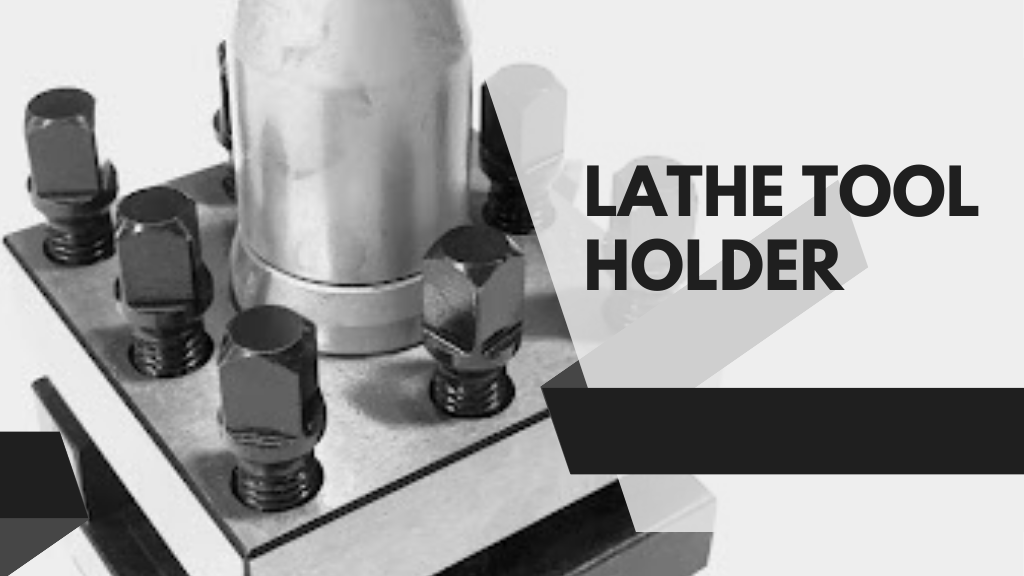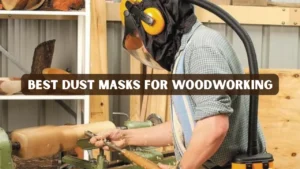In precision machining, few components are as essential as the lathe tool holder. This small but powerful part ensures that cutting tools are securely mounted and correctly positioned, allowing machinists to produce accurate, smooth, and repeatable results. Whether you are a hobbyist working on a mini lathe or a professional operating CNC machinery, understanding tool holders for lathes can dramatically improve both performance and efficiency.
In this guide, we will cover everything you need to know about lathe tool holders. We will discuss types and uses, selection tips, maintenance practices, and real-world examples so you can make informed decisions and get the most out of your machining setup.
What is a Lathe Tool Holder?
A lathe tool holder is a device designed to hold and position the cutting tool on a lathe machine with precision. Its main role is to keep the tool rigid and stable during operation, which helps minimize vibration and ensure accurate cuts. Without a proper tool holder, even high-quality lathes can produce rough finishes, incorrect dimensions, and excessive tool wear.
Key purposes of a lathe tool holder:
- Securely holds the cutting tool in place
- Maintains correct alignment and cutting angle
- Reduces vibration for a smoother finish
- Enhances safety during operation
- Allows quick tool changes in production environments
Types of Lathe Tool Holders
Different machining operations require different tool holder designs. Choosing the right type improves precision, efficiency, and surface finish. Below are some of the most common types used in workshops and production facilities.
-
Quick Change Tool Holders (QCTH)
A Quick Change Tool Holder allows machinists to swap tools rapidly without resetting the cutting position. They are popular in both industrial and home workshops for their speed and convenience. QCTHs save time during tool changes, ensure consistent positioning, and work well for high-mix, low-volume production. For example, switching between a facing tool and a boring bar can be done in seconds, saving valuable minutes per part.
-
Indexable Tool Holders
Indexable holders use replaceable carbide inserts that can be rotated or flipped when worn. This eliminates the need for re-sharpening and extends tool life, making them excellent for high-production CNC work. In a production line machining stainless steel components, an indexable holder can last longer and reduce downtime compared to traditional HSS tools.
-
Boring Bar Holders
Boring bar holders are designed for internal machining operations such as enlarging holes or achieving precise internal diameters. They provide stable support for deep hole boring, reduce chatter inside bores, and work with different boring bar sizes. This stability is essential for maintaining accuracy in precision components.
-
Knurling Tool Holders
Knurling tool holders create textured patterns on workpieces for improved grip or decorative purposes. They can work on a wide range of materials and are available in scissor-type or push-type designs. By applying consistent pressure, they produce uniform and professional knurl patterns.
-
Parting Tool Holders
Parting, or cut-off tool holders, are used to separate finished parts from the raw stock. They provide stable clamping to prevent tool breakage and have optimized geometry for efficient cutting. Many designs can also accommodate different blade widths for added versatility.
-
Multifix Tool Holders
The Multifix system is a European-style holder known for its high rigidity and ability to preset multiple cutting angles. It is ideal for heavy cuts and quick setup in complex machining tasks. This makes it a favorite among machinists who work on diverse and demanding projects.
Key Factors to Consider When Choosing a Lathe Tool Holder
Selecting the right tool holder can make the difference between a frustrating and a smooth machining experience. The right choice improves precision, reduces vibration, and extends tool life. On the other hand, the wrong choice can lead to poor surface finishes, wasted time, and even tool breakage. Consider the following key factors before making your decision.
-
Lathe Type
The size, capacity, and style of your lathe will strongly influence the type of tool holders you can use. Manual lathes may work best with simpler fixed holders, while CNC machines often benefit from more advanced quick change or indexable systems. Bench-top models typically require smaller, lighter holders, whereas industrial lathes can handle larger and heavier designs for more demanding work.
-
Tool Shank Size
The tool holder must match the shank size of your cutting tool to ensure proper fit and performance. Common shank sizes include 1/4 inch, 3/8 inch, 1/2 inch, and even larger dimensions for heavy-duty applications. Using the wrong size can cause poor clamping, misalignment, or excessive vibration. Always check the tool and holder specifications before making a purchase.
-
Material Compatibility
Some materials require specific types of tool holders to achieve optimal results. Hard materials such as titanium or hardened steel generally perform better with carbide insert holders, which resist wear and heat. Softer metals like aluminum or brass can be machined effectively with HSS tool holders, which are easier to sharpen and more forgiving for lighter cuts. Matching the holder to the material improves both efficiency and tool longevity.
-
Quick Change vs. Fixed
If you frequently switch between different tools during a project, a quick change tool holder can save significant time and maintain consistent tool positioning. This makes them ideal for high-mix, low-volume work where flexibility is essential. Fixed holders, however, are perfectly suitable for dedicated operations where tool changes are rare, offering simplicity and lower initial cost.
-
Rigidity and Stability
A well-designed tool holder should be made from high-grade steel or similar durable materials to maintain rigidity under cutting forces. Precision machining of the holder’s components helps reduce vibration, which in turn improves accuracy and surface finish. The more stable the setup, the less chance there is for tool chatter or dimensional errors during the machining process.
How to Install a Lathe Tool Holder
Correct installation of a lathe tool holder is essential for both performance and safety. A poorly mounted holder can cause vibration, inaccurate cuts, or even dangerous tool ejection. Taking the time to install it correctly ensures that your machine runs smoothly and produces precise results. Step by step guide:
1. Power down the lathe
Turn off the lathe and ensure it has come to a complete stop before touching any part of the machine. This is a fundamental safety step that prevents accidental movement while you are working on installation.
2. Choose the right holder
Select the tool holder that matches both your machine’s tool post and the specific operation you plan to perform. Using the wrong type can lead to improper alignment or tool slippage during cutting.
3. Insert and secure the cutting tool
Place the cutting tool into the holder and tighten the clamping screws firmly. Ensure that the tool is seated properly in its slot, as even small misalignments can cause poor surface finishes or excessive wear.
4. Mount the holder to the tool post
Attach the tool holder to the lathe’s tool post, making sure it is properly seated and stable. Tighten any locking levers or screws to hold it securely in position.
5. Align with the centerline
Adjust the height so that the tool tip is exactly at the centerline of the workpiece. Correct alignment is crucial for reducing cutting resistance and achieving clean, accurate results.
6. Lock and test
Once all adjustments are made, tighten every lock to prevent movement during operation. Start the lathe at a low speed to test the setup before running at full cutting speed.
Maintenance Tips for Lathe Tool Holders
Proper maintenance not only extends the lifespan of a lathe tool holder but also ensures consistent machining quality. A neglected holder can cause tool misalignment, vibration, or even damage to the workpiece. Regular care will help you get the most out of your equipment.
-
Clean after every use
Remove chips, dust, and coolant residue from the holder after each machining session. Build-up can cause uneven clamping and affect tool alignment. Using a clean rag or compressed air helps keep surfaces free of debris.
-
Lubricate moving parts
Apply a light machine oil to any moving or adjustable components. This prevents rust, keeps adjustments smooth, and makes it easier to lock the holder firmly in place during setup.
-
Inspect for damage
Check for cracks, bent parts, worn clamping screws, or other visible wear. Catching these problems early prevents tool slippage and helps maintain precision during cutting.
-
Store in a clean, dry location
Place tool holders in a toolbox or rack away from moisture and contaminants. Corrosion can quickly reduce accuracy and shorten the holder’s service life.
-
Replace damaged components
If a holder is damaged or worn beyond repair, replace it immediately. Continuing to use compromised equipment can lead to poor performance and potential safety hazards.
Safety Considerations
Working with a lathe tool holder requires strict adherence to safety practices to avoid injury and protect equipment. Even small mistakes can lead to accidents when dealing with high-speed rotating parts. Always take the time to prepare properly before starting any machining operation.
-
Wear protective equipment
Always wear safety glasses to protect your eyes from flying chips and debris. Additional gear such as gloves, ear protection, and a face shield can provide extra safety depending on the job.
-
Never adjust while running
Do not attempt to adjust or tighten the tool holder while the lathe is operating. Make sure the machine is fully stopped before making any changes to prevent serious accidents.
-
Maintain correct tool height
Ensure the cutting edge is aligned with the centerline of the workpiece. Incorrect height can cause chatter, poor finishes, and even dangerous tool breakage.
-
Use the correct tooling
Select the appropriate insert or cutting tool for the specific material being machined. Using the wrong tool can reduce efficiency, damage the workpiece, and increase the risk of tool failure.
Real-World Example: Boosting Productivity with the Right Tool Holder
At a small aerospace components shop in Ohio, the team faced frequent delays during tool changes, which slowed production and increased downtime. By switching from traditional tool posts to quick-change tool holders, setup times were reduced by nearly 40 percent. Operators noticed more consistent surface finishes and a significant drop in rejected parts. Over the course of a year, these improvements saved the company thousands of dollars while increasing customer satisfaction.
Where to Buy Lathe Tool Holders
- McMaster-Carr, large selection and industrial quality
- MSC Industrial Supply, tooling for both CNC and manual lathes
- Amazon, affordable options for hobbyists and small shops
- Machine shop supply stores
- Metalworking trade shows
Cost of Lathe Tool Holders
The price varies widely depending on type, size, and brand:
- Basic HSS holders, $20 to $50
- Quick Change systems, $150 to $500 or more
- High-end CNC indexable holders, $200 to $1,000 or more
Conclusion
A lathe tool holder is more than just an accessory, it is a critical part of achieving precision, efficiency, and safety in machining. By choosing the right type, maintaining it properly, and using it with skill, you can dramatically improve your machining results. Whether you are a weekend hobbyist or a full-time professional, investing in quality tool holders is one of the smartest moves you can make for your workshop.
FAQs
1. What is the best tool holder for a beginner?
A basic quick-change tool post with a few holders is ideal for beginners because it allows easy setup and flexibility.
2. Can I use the same holder for different materials?
Yes, as long as the cutting tool is appropriate for the material, but specialized holders can improve performance.
3. How do I know if my tool holder is worn out?
Signs include poor surface finish, increased vibration, and difficulty clamping tools securely.
4. Are indexable holders worth the price?
For high-production work, yes. They save time and money by reducing tool change and re-sharpening downtime.
5. Can I make my own lathe tool holder?
Skilled machinists can fabricate custom holders, but for precision and safety, buying from a reputable source is recommended.




